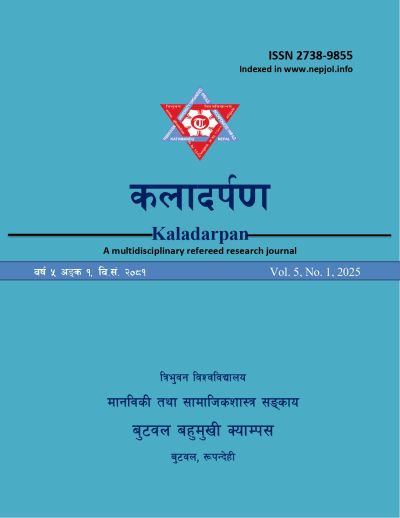Between Science and Cinema: Christopher Nolan's Auteurist Vision in Interstellar
DOI:
https://doi.org/10.3126/kaladarpan.v5i1.74742Keywords:
Auteur Theory, Science Fiction, Cinematic Storytelling, Representation of Science, filmography, critical receptionAbstract
The paper attempts at exploring Nolan's auteurist vision in Interstellar, exploring how he navigates the complex intersection of science and cinema. Employing an interdisciplinary approach that draws from auteur theory, science fiction studies, and narratology, this research conducts an in-depth analysis of Interstellar. It examines Nolan's distinctive stylistic signatures, including his visual aesthetics, nonlinear storytelling techniques, and exploration of scientific concepts such as relativity, time dilation, and astrophysical phenomena. Through a close reading of the film's narrative structure, character development, and symbolic motifs, the paper unravels how Nolan seamlessly integrates complex scientific ideas into the emotional core of the story. It investigates how he creates a harmonious fusion of science fiction and human drama, challenging conventional boundaries and pushing the limits of cinematic representation. Furthermore, this research situates "Interstellar" within Nolan's broader filmography, identifying recurring themes, stylistic choices, and his unique approach to cinematic storytelling. By examining the critical reception and scholarly discourse surrounding the film, the paper contributes to a deeper understanding of Nolan's auteurist vision and his contributions to the representation of science in cinema. Ultimately, the paper offers insights into Nolan's mastery in bridging the realms of science and cinema, illuminating how his auteurist vision in Interstellar expands the possibilities of cinematic storytelling and challenges audiences to engage with complex scientific concepts through the medium of film.




